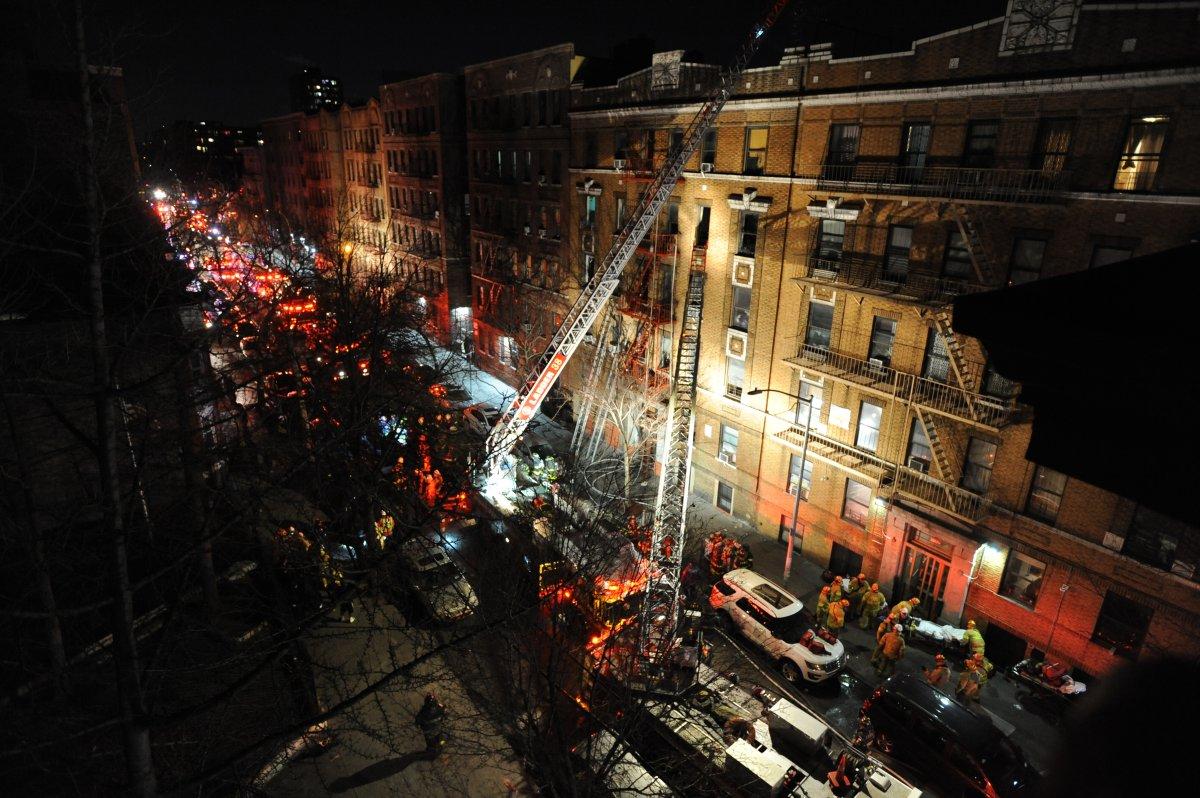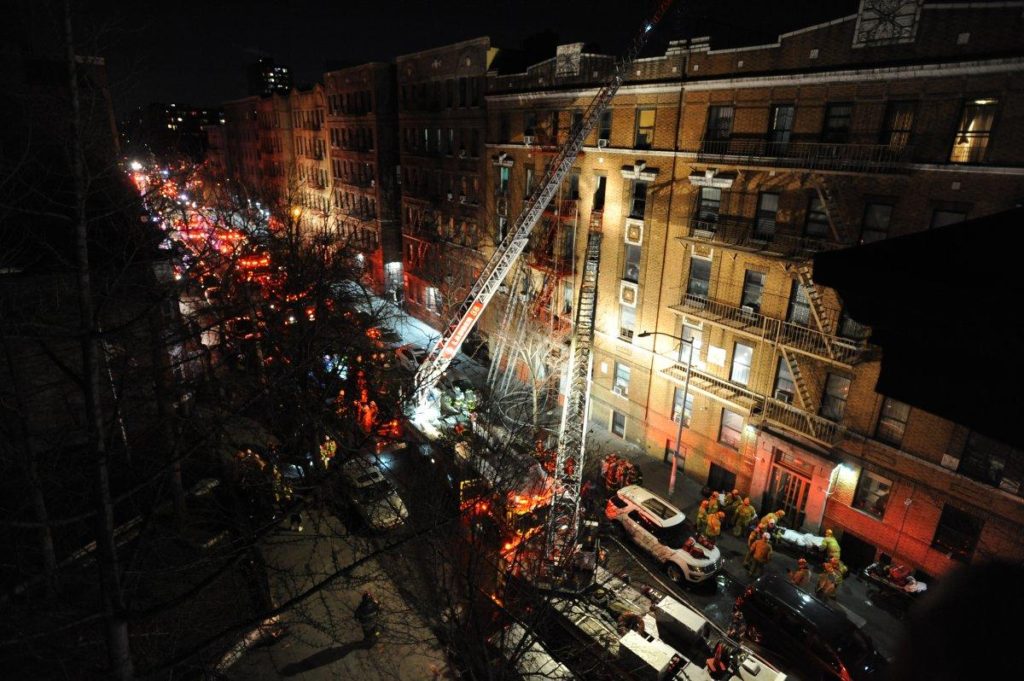I suspect that many of you already know what the topic of today’s post will be; many readers sent me links to news reports on last week’s fire in a Bronx apartment building. Twelve people have died and four more were critically injured in this fire which was reportedly started by a toddler playing with the knobs of a gas stove. The door to the apartment of fire origin was left open, allowing the smoke and flames to spread up the open stairwell and trap some of the building’s residents.
The aftermath of these tragedies has become quite predictable. Anyone with access to social media has a way to immediately share their opinions and point fingers – where were the parents?…why wasn’t the stove equipped with a gadget to prevent access to the knobs?…why did the toddler’s mother leave the apartment door open when she escaped with her 2- and 3-year-old children?…why didn’t all of the smoke detectors function?…why weren’t there sprinklers in the building?
As some of you can probably imagine, I have a hard time keeping quiet. Of course I wish with all of my heart that these tragedies didn’t occur, but when they do, I see an opportunity to educate and inform. Banging this drum is not for the faint-of-heart, though. The FDNY posted this message on Facebook “FDNY Commissioner Daniel A. Nigro urges everyone to please close the door behind you if fleeing an apartment that is on fire,” and I left a comment about self-closing, self-latching fire door assemblies and annual inspections. A woman responded, “Yeah don’t hold people accountable for their actions at all – blame the government for not closing the door.”
<Sigh> I’m not blaming the government, or the mom, or the 3-year-old. I’m not blaming the FDNY, the residents who tried to escape via the smoke-filled open stairwell, the manufacturers of the stove or the smoke detectors. I’m simply stating a fact – for decades, fire door assemblies have been required by building codes and fire codes for interior apartment entrances. These fire door assemblies are designed to close and latch on their own – without intervention from a panicked mother carrying her two toddlers. If the assemblies are functioning as designed and constructed, they will help to protect the means of egress and the occupants of other apartments with closed doors.
This is not the first apartment fire where the door has been left open, allowing the smoke and flames to spread; these victims are not the first people to die this way. The codes are in place to help prevent this from occurring. Lack of maintenance is no excuse, since the criteria for annual fire door assembly inspections has been included in NFPA 80 for more than 10 years. What’s missing is education. If the general public was better-informed about the purpose of fire door assemblies, more would value the protection provided rather than viewing self-closing doors as a nuisance. In a recent conversation with NFPA staff, I discussed the need for more education related specifically to fire doors in multi-family residential occupancies.
The FDNY commissioner says, “Close the door. Close the door. Close the door.” If fire door assemblies are present and maintained as required by code, the doors will close themselves. According to one news report quoting Matthew Creegan, spokesman for the Department of Housing Preservation and Development, “Creegan says the city takes seriously the issue of self-closing doors, required in all dwellings with more than three units. He says the city cited landlords over 7,752 times in the last year for violations of the self-closing-door requirement.” (Here’s an interesting perspective, and another.)
Let’s hope that the scale of the most recent fire will result in positive change and improved fire safety to help prevent similar tragedies in the future.
Here’s a report from NBC News:
For more information about fire door assemblies, visit the Fire Door page of this site.
You need to login or register to bookmark/favorite this content.







I remember being told during fire drills, in elementary school, in the sixties: “Last person out, close the door”
It was taught in years past, must be more important stuff to teach now?! NOT!!
I back you 100%, Lori. Education is the missing link. However, after being told 7,752 times that the fire doors are noncompliant, I think the landlords are irresponsible. I do blame them if they are told and do nothing.
I agree…EDUCATION is what need to keep doing. Thanks for reviewing this situation and speaking up. This is the only way to help prevent tragedies in the future. Building owners need to understand “maintenance” and educating occupants/tenants. Not sure of this specific case, but if the door DID have a closer on it because it was rated, but the tenant had a door stop or something, that would have negated the best code compliant design intentions.
I suspect that NYC (New York city) already does not have enough inspectors (Fire Marshals) to perform the inspection work required to ensure a reasonable level of safety in all of the buildings needing to be looked at. NY State is cracking down on municipal entities (cities, towns and villages) to ensure that their inspectors are qualified and that the required inspections are being performed. As far as I know, there is not educational component in this plan, but that is what it will take to effectively manage the problem…educating the public as to what is required and making it clear to them that having them provide the “complaints” that allow the code authorities to focus on the locations where the problems are helps everybody to live more safely. In concert, there needs to be repercussion for landlords who take actions against their tenants; and also a penalty for abusive reporting.
I agree that there is not enough manpower in fire prevention, but educated landlords and informed tenants could help mitigate the problem. Insurance companies could have a big impact too…instead of paying out for the loss of a 25-unit building, 12 fatalities, plus injuries, the insurance claim for this fire MIGHT have been limited to one unit.
– Lori
Lori,
I’ve been saying this for years, I’ve been a volunteer for 32 years and national fire incident safety officer for 4, the idea is not to treat a problem but to prevent. Do you want to treat cancer or prevent, do you want to prevent a fire or extinguish after it ignites. I doesn’t take a brain to come to the conclusion.
Were I an insurer, eager to minimize my company’s exposure to loss, I would consider excluding payment for losses where inspector citations indicated non-compliance or failure to correct within, say, a week of notification. You can be sure that there is an armada of personal injury legal firms waiting to pounce on the landlord’s negligence in this case. A few cases of landlords having to pay out of pocket would heighten interest in building safety.
Another way to enforce compliance is in real estate transactions. In California, where I live, a seller has to certify to a buyer that a building meets many specific code and safety criteria. It gets the attention of all parties.